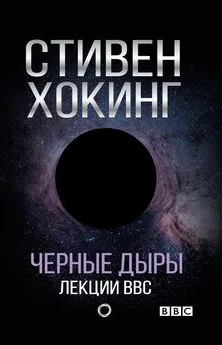Артур Миллер - Империя звезд, или Белые карлики и черные дыры
- Название:Империя звезд, или Белые карлики и черные дыры
- Автор:
- Жанр:
- Издательство:КоЛибри
- Год:2012
- Город:Москва
- ISBN:978-5-389-02245-4
- Рейтинг:
- Избранное:Добавить в избранное
-
Отзывы:
-
Ваша оценка:
Артур Миллер - Империя звезд, или Белые карлики и черные дыры краткое содержание
Артур Миллер, известный американский историк науки (сейчас живет в Лондоне), повествует о выдающихся открытиях астрофизиков XX века. В центре рассказа — судьба индийского физика, лауреата Нобелевской премии Субрахманьяна Чандрасекара, чьи теории во многом сформировали наши сегодняшние представления о Вселенной. Книга Миллера — об эволюции звезд, о белых карликах, красных гигантах, нейтронных звездах и о самых таинственных космических объектах — черных дырах, жадно пожирающих материю и энергию.
Империя звезд, или Белые карлики и черные дыры - читать онлайн бесплатно полную версию (весь текст целиком)
Интервал:
Закладка:
Early Quantum Electrodynamics: A Source Book (Cambridge, Cambridge University Press, 1994).
Albert Einstein's Special Theory of Relativity: Emergence (1905) and Early Interpretation (1905–1911) (Reading, MA, Addison-Wesley, 1981: Reprinted, London, Springer-Verlag, 1998).
Insights of Genius: Imagery and Creativity in Science and Art (New York: Springer-Verlag, 1996; Cambridge, MA, MIT Press, 2000).
Erotica, aesthetics and Schrödinger’s wave equation. In: Graham Farmeloe (ed.). It Must be Beautiful: Great Equations in Modern Science (London, Granta, 2002), 80-101.
MILNE EDWARD ARTHUR. Those in Authority: R. H. Fowler M. A. (Trinity), Senior Lecturer. The Granta, 1923, 32, 469.
Excerpt from the Meeting of the Royal Astronomical Society, 14 November 1930. The Observatory, 1930, 53, 330-4.
The analysis of stellar structure. Monthly Notices of the Royal Astronomical Society, 1930, 91, 4-55.
Excerpt from the Meeting of the Royal Astronomical Society, 9 January 1931. The Observatory, 1931, 54, 34.
Excerpt from the Meeting of the Royal Astronomical Society, 13 March 1931, 99-101; Excerpt from the Meeting of the Royal Astronomical Society, 10 April 1931, 126–129; Excerpt from the Meeting of the Royal Astronomical Society, 8 May 1931, 154–155; Letter to the Editors, 243–251. The Observatory, 1931, 54.
The theory of stellar structure II (Energy-generation). Zeitschrift fur Astrophysik, 1932, 5, 337–347.
Excerpt from the Meeting of the Royal Astronomical Society, 11 January 1935. The Observatory, 1935, 58, 52.
Relativity, Gravitation and World-Structure (Oxford, Oxford University Press, 1935).
Letter to the Editors. The Observatory, 1935, 58, 174–176.
The white dwarf stars. The Halley Lecture, delivered 19 May 1932, in Five Halley Lectures (Oxford, Oxford University Press, 1936). 3-32.
Ralph Howard Fowler. Obituary Notices of Fellows of The Royal Society, 1945, 5, 61–78.
Ralph H. Fowler. Monthly Notices of the Royal Astronomical Society, 1945, 105, 80–87.
Sir James Jeans. Obituary Notices of Fellows of the Royal Society, 1947, 5, 573–589.
MISNER CHARLES WITH KIP S. Thorne and John A. Wheeler. Gravitation (New York, Freeman, 1970).
MOORE WALTER. Schrödinger: Life and Thought (Cambridge, Cambridge University Press, 1971).
NASA. Apollo 15 Preliminary Science Report, Special Publication SP-289 (Washington, DC: Science and Technical Information Office, 1972).
OPPENHEIMER J. ROBERT AND ROBERT SERBER. On the stability of stellar neutron cores. Physical Review, 1938, 54.
AND HARLAND SNYDER. On continued gravitational contraction. Physical Review, 1939, 56, 455–459.
AND GEORG M. VOLKOFF. On massive neutron cores. Physical Review, 1939, 55, 374–381.
OSTERBROCK DONALD E. Walter Baade, observational astrophysicist, (2): Mount Wilson 1931–1937. Journal of the History of Astronomy, 1996, 27, 301–348.
Yerkes Observatory, 1892–1950: The Birth, Near Death, and Resurrection of Scientific Research Institution (Chicago, University of Chicago Press. 1997).
Chandra and his students at Yerkes Observatory. In: G. Srinivasan (ed.). From White Dwarfs to Black Holes: The Legacy of S. Chandrasekhar (Chicago: University of Chicago Press, 1999), 199–237.
Who really coined the word supernova/Who first predicted neutron stars? Bulletin of the American Astronomical Society, 2001, 33, 1330–1331.
PAIS ABRAHAM. Inward Bound: On Matter and Forces in the Physical World (Oxford, Oxford University Press, 1986).
The Genius of Science: A portrait gallery of twentieth-century physicists (Oxford: Oxford University Press, 2000).
PAULI WOLFGANG. The influence of archetypal ideas on the scientific theories of Kepler. In: C. G. Jung and W. Pauli. The Interpretation of Nature and the Psyche (New York, Pantheon, 1955).
Wissenschaftlicher Briefwechsel mit Bohr, Einstein, Heisenberg, U. A. I: 1919–1929 (eds., A. V. Hermann, K.v.Meyenn, V. F. Weiskopf). (Berlin, Springer, 1979).
PAYNE-GAPOSCHKIN C. The Relative Abundances of the Elements. In: Stellar Atmospheres. Harvard Observatory Monograph, №.1 (Cambridge, MA: Harvard University Press, 1925).
Interview by Owen Gingerich, 5 March 1968, AIP.
AND KATHERINE HARAMUNDANIS. Introduction to Astronomy (Englewood Cliffs, NJ, Prentice-Hall, 1970).
PEIERLS RUDOLF. Note on the derivation of the equation of state for a degenerate relativistic gas. Monthly Notices of the Royal Astronomical Society, 1935–1936, 96, 780–784.
PELLAM, J.R. Lev Davidovich Landau. In: I. M. Khalatnikov. Landau: The Physicist and the Man (New York: Pergamon Press, 1989), 198–204.
PENROSE ROGER. Gravitational collapse and space-time singularities. Physical Review Letters, 1965,14,57–59.
Gravitational Collapse: the role of general relativity. Revista del Nuovo Cimento, Numero speciale, 1969, 1, 252–276.
PLASKETT HENRY H. Edward Arthur Milne. Monthly Notices of the Royal Astronomical Society, 1951, 111, 170–172.
PLUMMER H. C. Arthur Stanley Eddington. Obituary Notices of the Royal Society, 1948, 5, 113–125.
RAMAN C. V. The molecular scattering of light. Lecture delivered 11 December 1930. In: Nobel Lectures in Physics, 1922–1941 (New York, Elsevier, 1965), 267–275.
RAMASESHAN S. S. Chandrasekhar and C. V. Raman — some letters. Current Science, 1996, 70, 104–107.
Chandrasekhar — some reminiscences. In: K. C. Wali (ed.). S. Chandrasekhar: The Man Behind the Legend (London, Imperial College Press, 1997), 101–102.
REES MARTIN. Reminiscing about Chandra’s research. In: K.C. Wali (ed.). S. Chandrasekhar: The Man Behind the Legend (London. Imperial College Press, 1997), 183–186.
Astrophysical evidence for black holes. In: R.W. Wald, (ed.). Black Holes and Relativistic Stars (Chicago, University of Chicago Press, 1998), 79-101.
RHODES RICHARD. The Making of the Atomic Bomb (New York, Simon & Schuster, 1986).
Dark Sun: The Making of the Hydrogen Bomb (New York, Simon&Schuster, 1995).
ROSENFELD LEON. Nuclear physics, past and future. In: M. Neve de Mevergnies, P. Van Assche and J. Vervier (eds.). Nuclear Structure Study with Neutrons (Amsterdam: North Holland, 1996).
Niels Bohr in the thirties. In: S. Rozenthal (ed.), Niels Bohr: His Life and Work as Seen by His Friends and Colleagues (New York, Wiley, 1967), 114–136.
RÜGER ALEXANDER. Atomism from cosmology: Erwin Schrodinger’s work on wave mechanics and space-time structure. Historical Studies in the Physical Sciences, 1988, 18, 377–401.
RÜSSELL HENRY NORRIS. Giant and dwarf stars. The Observatory, 1913, 36, 325.
Relations Between Spectra and Other Characteristics of Stars. Popular Astronomy, 1914, 22, 275–294.
The Problem of stellar evolution’, Nature, 1925, 116, 209–212. Address. In: Conferences du College de France, Colloque International d’Astrophysique, 17–23 juillet 1939 (Paris: Hermann, 1941), 1–6.
Arthur Stanley Eddington, 1882–1944. Astrophysical Journal, 1945, 101, 133–135.
SAHA MEGHNAD. Ionisation in the solar chromosphere. Philosophical Magazine, 1920, 40, 479–488.
SAKHAROV ANDREI. Memoirs (New York, Knopf, 1990).
SALPETER EDWIN E. Energy and pressure of a zero-temperature plasma. Astrophysical Journal, 1961, 134, 669–682.
Neutron stars before 1967 and my debt to Chandra. In: G. Srinivasan (ed.). From White Dwarfs to Black Holes: The Legacy of S. Chandrasekhar (Chicago, University of Chicago Press, 1999), 27–29.
SANDAGE ALLAN R. and Martin Schwarzschild. Inhomogeneous Stellar Models II: Models with Exhausted Cores in Gravitational Contraction. Astrophysical Journal, 1952, 116, 463–476.
SCHMIDT MAARTEN. A star-like object with large red-shift. Nature, 1963, 197, 1040.
SCHÖDEL R., et.al. A star in a 15.2-year orbit around the supermassive black hole at the centre of the Milky Way. Nature, 2002, 419, 694–696.
SCOTT DAVID R., Alexei Leonov, Christine Toomey. Two Sides of the Moon: Our Story of the Cold War Space Race (New York, Simon & Schuster, 2004).
SERBER ROBERT. The Los Alamos Primer (Berkeley, CA, University of California Press, 1992).
SINGH AMAR KUMAN. Indian Students in Britain: A Survey of Their Adjustment and Attitudes (London, Asia Publishing House, 1963).
SINGH SIMON. Big Bang: The most important scientific discovery of all time and why you need to know about it (London, Fourth Estate, 2004).
SLATER GILBERT. Southern India: Its Political & Economic Problems (London, George Allen & Unwin, 1936).
SMART W.G.M. Excerpt from the Meeting of the Royal Astronomical Society, 9 January 1931. The Observatory, 1931, 54, 38.
SOMMERFELD ARNOLD. Atomic Structure and Spectral Lines. (London, Methuen, 1923).
Zur Elektronentheorie der Metallen auf Grund der Fermischen Statistik. Zeitschrift für Physik, 1928. 47, 1-32.
Zur Elektronentheorie der Metallen auf Grund der Fermischen Statistik, insbesondre über den Volta-Effekt. Zeitschrift für Physik, 1928, 47, 38–60.
STONER EDMUND C. The limiting density in white dwarf stars. Philosophical Magazine, 1929, 7, 63–70.
The equilibrium of dense stars. Philosophical Magazine 1930, 9, 944–963.
The minimum pressure of a degenerate gas. Monthly Notices of the Royal Astronomical Society, 1932, 92, 651–661.
Upper limits for densities and temperatures in stars. Monthly Notices of the Royal Astronomical Society, 1932, 92, 662–676.
STRÖMGREN BENGT. The opacity of stellar matter and the hydrogen content of the stars. Zeitschrift für Astrophysik, 1932. 4, 118–152.
On the interpretation of the Hertzsprung-Russell-diagram. Zeitschrift für Astrophysik, 1932,7,222–248.
Interview by Lillian Hoddeson and Gordon Baym, 6 May and 13 May 1976, AIP.
STRUVE OTTO AND VELTA ZEBERGS. Astronomy of the Twentieth Century (New York, Macmillan, 1962).
STUEWER ROGER H. Gamow’s Theory of Alpha Decay’. In: Edna Ullman-Margalit (ed.). The Kaleidoscope of Science (Englewood Cliffs, NJ, Humanities Press, 1986).
SWERDLOW NOEL M. Chandrasekhar’s research on Newton’s Principia. In: K.C. Wali (ed.). S. Chandrasekhar, The Man Behind the Legend (London, Imperial College Press, 1997), 201–205.
TELEGDI VALENTIN. Recollections About Chandra. In: К. C. Wali (ed.). The Man Behind the Legend (London, Imperial College Press, 1997), 206–209.
TEUKOLSKY SAUL A. Chandra at Caltech. In: K.C. Wali (ed.). S. Chandrasekhar. The Man Behind the Legend (London, Imperial College Press, 1997), 76–79.
THORNE KIP. Black Holes and Time Warps: Einstein’s Outrageous Legacy (News York, Norton, 1994).
Probing black holes and relativistic stars with gravitational waves. In: R.M. Wald (ed.). Black Holes and Relativistic Stars (Chicago, University of Chicago Press, 1998), 41–78.
ULAM STANISLAW. Adventures of a Mathematician (New York, Scribner’s, 1976).
USAEC (United States Atomic Energy Commission). In the Matter of J. Robert Oppenheimer (Cambridge, MA: MIT Press, 1954).
VANDERVOORT PETER O. (n.d.). S. Chandrasekhar: Incidental lessons. Unpublished manuscript.
VAN MAANEN ADRIAN. Two Faint Stars with Large Proper Motion. Publications of the Astronomical Society of the Pacific, 1917, 29, 258–259.
WALI KAMESHWAR C. Chandra: A Biography of S. Chandrasekhar (Chicago, University of Chicago Press, 1984).
WEINBERG STEVEN. The First Three Minutes: A Modem View of the Origin of the Universe (New York: Basic Books, 1977).
WESTFALL ROBERT S. Technical Newton. Isis, 1996, 87, 701–706.
WESTON-SMITH MEG. E. A. Milne and the creation of air defence: Some letters from an Unprincipled Brigand, 1916–1919. Notes and Records of the Royal Society, 1990, 44, 241–255.
Читать дальшеИнтервал:
Закладка:
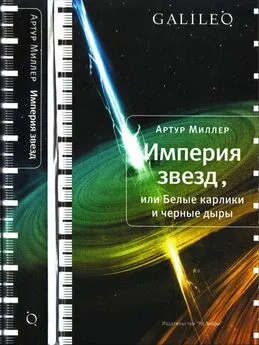

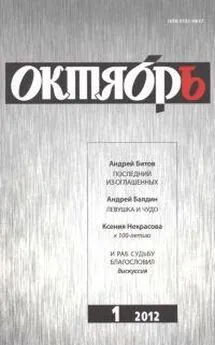
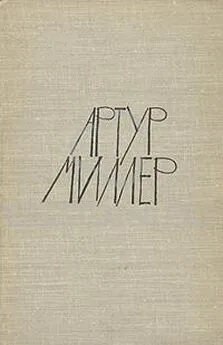
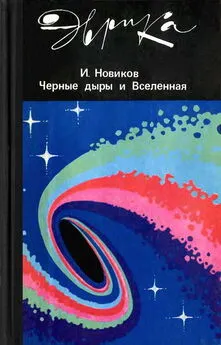
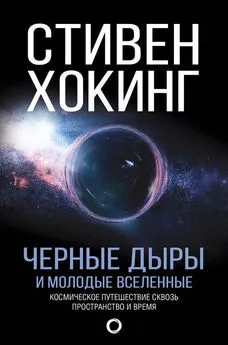
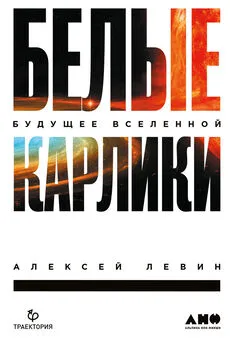
![Стивен Хокинг - Черные дыры. Лекции BBC [litres]](/books/1071972/stiven-hoking-chernye-dyry-lekcii-bbc-litres.webp)
![Владимир Мазья - 007 и черные дыры [litres]](/books/1150210/vladimir-mazya-007-i-chernye-dyry-litres.webp)

